We follow 13,696 shorted U.S. domestic stocks with total short interest of $1.13 trillion. Short selling in these stocks is highly concentrated, with the top twenty-five most shorted stocks totaling $192 billion, making up 16.9% of the total shorts in the market.
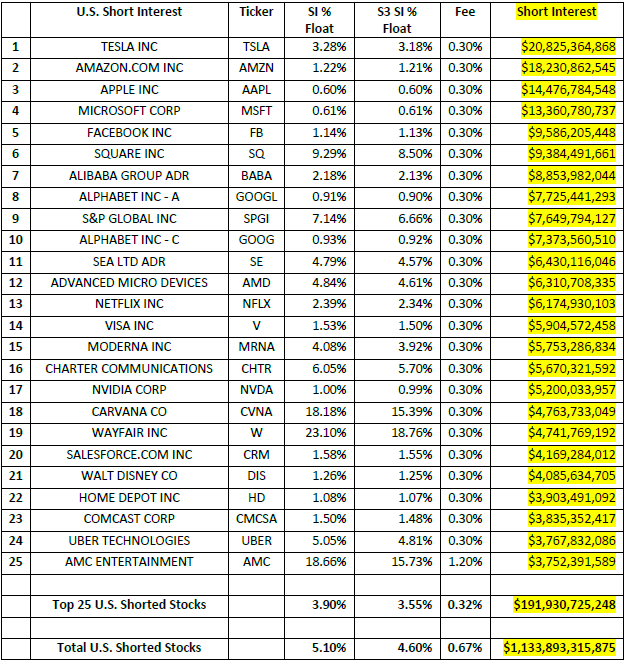
The S&P 500 was down -1.47% over the last 30 days along with the Nasdaq -1.05% and broader Russell 3000 -1.36%, with the price of shares shorted declining over the last thirty days we saw increased short selling that more than offset the mark-to-market change in shares shorted. The following are the U.S. traded stocks with the greatest increase in short exposure over the last thirty days. Overall short interest exposure increased by $2.88 billion over the last 30 days, +0.25%.
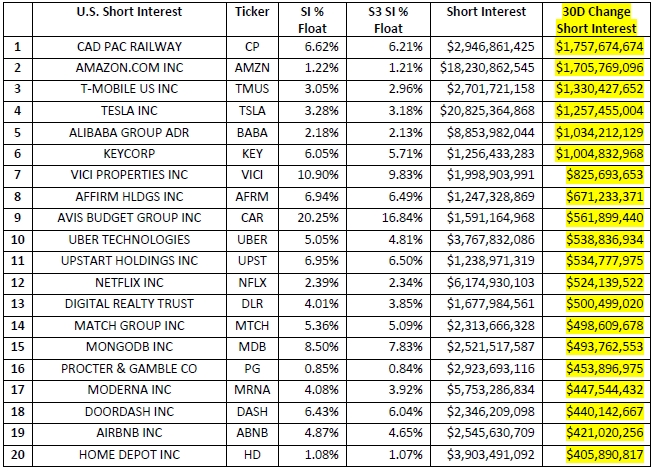
The following stocks had the largest reduction of short exposure over the last thirty days.
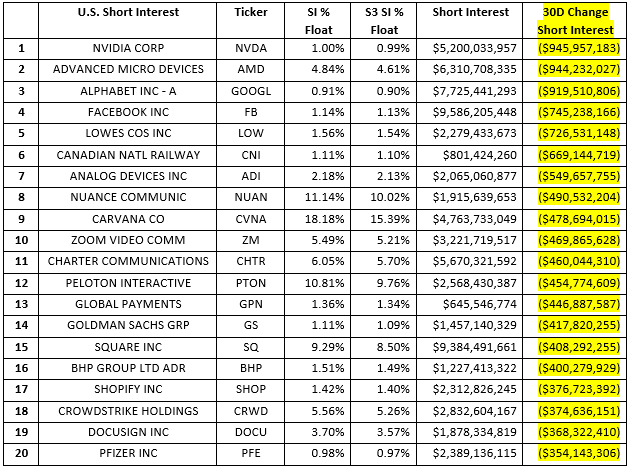
Changes in a stock’s short interest are made up of mark-to-market price moves and either short selling or short covering activity. While both change the overall amount of short interest in a stock, short selling and covering have a direct impact on the daily price moves of a stock. The following stocks had the largest increase in short selling activity over the last thirty days.

And the following stocks had the largest amount of short covering over the last thirty days.
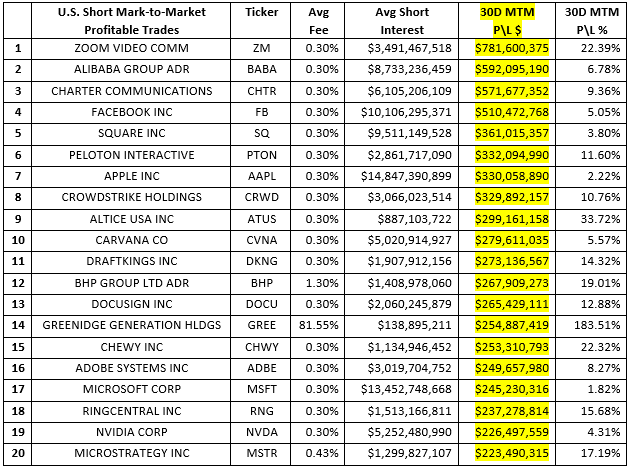
High Short Interest as a % of Float is a factor in the “crowdedness” of a shorted stock. Higher numbers can have negative effects on stock loan liquidity as well as trading liquidity. The following are stocks with highest SI % Float and short interest over $100 million. The average SI % of Float in the U.S. is 5.10% while the average S3 SI % Float, which includes the synthetic longs created by every short sale in the Float denominator, is 4.60%.
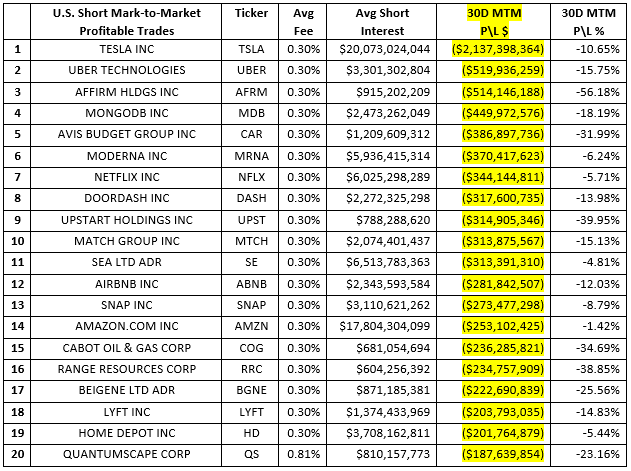
The average stock borrow fee in the U.S. has remained relatively stable recently with the average stock borrow fee at 0.67% versus 0.65% a month ago. The highest stock borrow fees in the U.S. for stocks with over $100 million of short interest are:
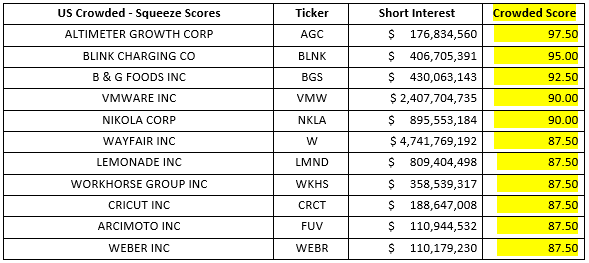
Overall, U.S. short sellers are up +$6.32 billion in net of financing mark-to-market profits over the last thirty days. A return of +0.56% on an average short interest of $1.13 trillion.
Short sellers are still in the red for the year, with year-to-date net-of-financing mark-to market losses in the U.S. market now at -$159.97 billion, a -14.29% return on an average short interest of $1.12 trillion.
The following are the most profitable shorts over the last thirty days:
And the least profitable shorts over the last thirty days:
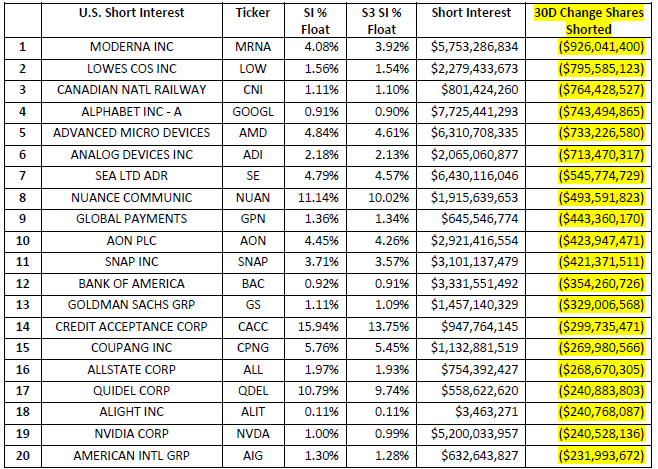
The definition of a “crowded” short trade varies from investor to investor but there are several themes that remain constant. A short can be considered to be “crowded” if some or all of the following occur: there are large amount of dollars at risk on the short side, a large proportion of a stock’s float is being shorted, there is illiquidity in the stock loan market and\or there is illiquidity in the trading market. The ten most crowded U.S. stocks with over $100 million of short interest, according to our Crowded Score, are:
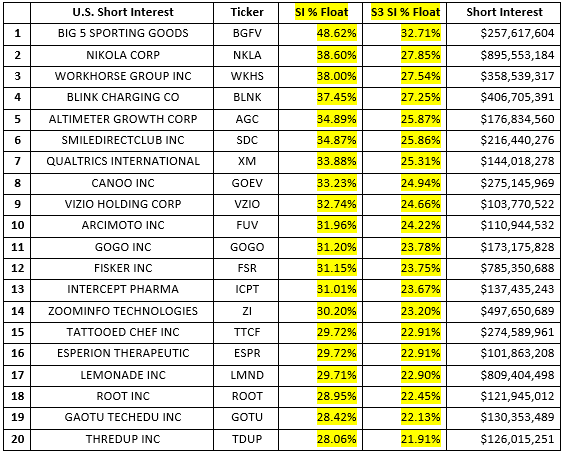
Not every Crowded stock is a Squeeze candidate. By overlaying our Squeeze algorithm over our Crowded Score, we can determine which U.S. traded stocks have the highest potential for a Squeeze, and which do not. The following ten stocks have earned our highest Squeeze Scores, which does not mean a Squeeze will definitely occur, but means that if the present trends continue, there is a good chance for a Squeeze.
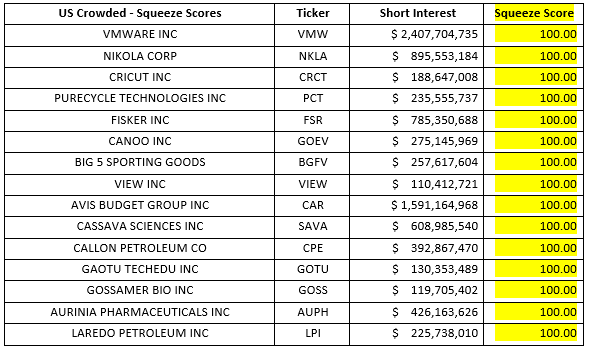
Looking at short selling trends over time provides insight into overall market sentiment as well as the strength of bearish conviction in individual equities. Our Blacklight SaaS platform and Black APP provides an up to date view of short selling and short covering on an equity, sector, index, or country-wide basis allowing investors\traders to better manage their existing long and short positions.
Research Note written by Ihor Dusaniwsky, Managing Director of Predictive Analytics, S3 Partners, LLC
For deeper insight into short side data and analysis contact me at Ihor.Dusaniwsky@S3Partners.com
For short side data and access to our research reports go to https://research.s3partners.com/.